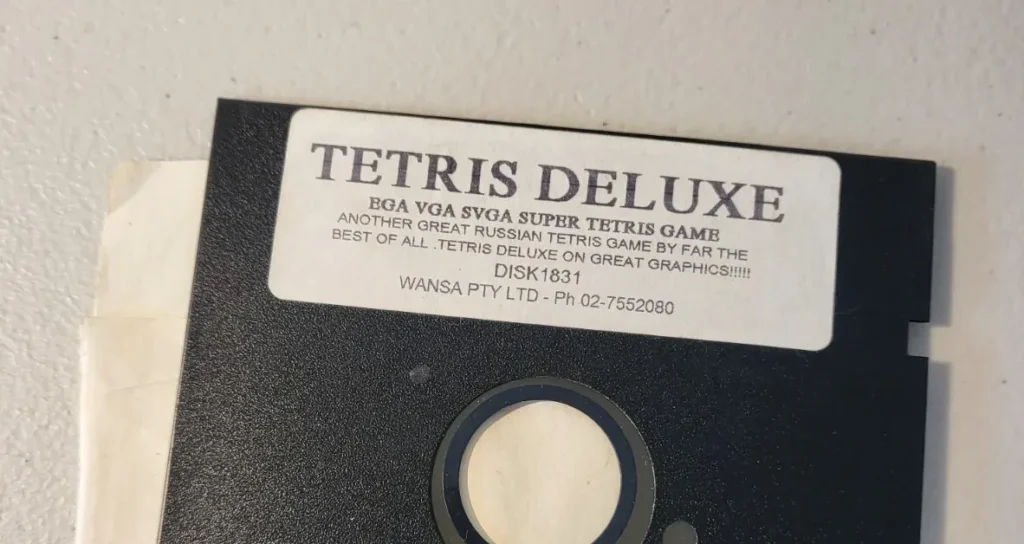
Games have always existed in a sales and numbers-obsessed vacuum. While Sega vs. Nintendo console wars defined a whole new generation of gaming consoles in the ‘90s, much like the PlayStation vs. Xbox have done in the early 2000s, there’s one single game that rules them all: Tetris. Sitting comfortably at the top of the list of best-selling games of all time, Tetris has sold 520 million copies since its inception across all available platforms. Those numbers, however, only reflect the sales number of copies The Tetris Company is aware of, considering that the game was highly pirated over the decades.
Tetris was initially created by a Soviet engineer, Alexey Pajitnov, in 1984 for the Electronika 60 computer. Little did he know that he single-handedly developed one of the world’s most addictive and influential video games while working for the Computer Center of the Soviet Academy of Sciences. However, what many don’t know is that the game’s journey from the East to the West was fraught with intrigue and legal battles, while more conspiratorial-minded fans believe that the original game was a tool used for espionage. But was that really so?

Well, the belief that Tetris was used as some covert means of communication actually stems from the fact that hackers found a hidden message embedded in the game’s code. However, the message was actually hidden by a Nintendo employee in 1999’s The New Tetris for the Nintendo 64 home game console, in which he calls Nintendo out, wishing the company would go bankrupt. But that’s about it; no malicious code was ever found in Tetris, and by the time the game reached the West, even the KGB was mad about the missed opportunity to spy on their enemies.
To be entirely honest, there’s little theory or historical evidence and credible documentation that would support claims of Tetris being used as an espionage tool. However, there are reasons to believe that the KGB, the notorious Soviet security agency, played its hand in Tetris’s journey from the East to the West, and those beliefs might — while still without evidence — be much more credible than Tetris being used as a keylogger or malicious software.

Pajitnov had completed the first playable version of Tetris circa 1985, and he had presented it to its colleague at the Academy, who quickly became addicted to the game. It spread around the office, and within a few weeks, it reached nearly every Moscow institute. Vladimir Pokhilko, Pajitnov’s personal friend, banned the game from the Moscow Medical Institute to restore productivity after noticing that people stopped working to play Tetris.
After adapting the game to IBM PCs with the help of Vadim Gerasimov, who is now a Google engineer credited as the co-developer of the game, Pajitnov sought to export the game but couldn’t, since the USSR copyright laws prevented researchers from selling their creations. However, with the help of his supervisor from the Academy, Victor Brjabrin, Pajitnov sent a copy of the game to Hungarian game publisher Novotrade, and from there, Tetris began circulating via floppy disks throughout Hungary and Poland.

The game’s commercial success was recognized by Robert Stein, an international software salesman, who contracted Pajitnov and Brjabrin via fax to broker the license rights. Both Pajitnov and Brjabrin were interested in forming an agreement with Stein, but little did they know that fax was considered a legal contract in the West, and Stein began selling the rights to the game he still didn’t own to companies left and right. By 1988, almost a dozen companies, including Atari Games, Sega, BPS, and Nintendo, believed that they held the Tetris rights that Stein sold to them.
Soviet Union’s Elektronorgtechnica (Elrog), who dealt with the import and export of software and negotiated the licensing terms on behalf of Pajitnov, was unaware that Stein, who acquired the rights for Tetris for computer systems, licensed the game to console and arcade manufacturers. At the same time, Nintendo was preparing to launch Game Boy, the first handheld console, and expressed interest in Tetris as a launch title due to the game’s massive success on its Famicom console (NES).

Henk Rogers, who was close to Hiroshi Yamauchi, then-Nintendo president, sought to obtain the handheld rights to Tetris from Stein following failed negotiations with Atari. Stein agreed but explained that he had to consult Elektronorgtechnica, which caused Rogers to suspect a breach of contract on Stein’s part. Rogers went to Elektronorgtechnica’s offices unannounced to negotiate the rights.
After Elektronorgtechnica heads realized Stein had deceived them, they revised his contract, which reaffirmed that he only owned the rights to Tetris for computer systems, thus withdrawing his rights to console versions — the rights he had already sold to other companies. The rights to the console and handheld systems were eventually sold to Nintendo via Rogers in 1988, and in 1989, Nintendo sent a cease and desist to Atari regarding the production of the NES versions of Tetris.

This produced a legal chain reaction that involved Atari, Nintendo, Elrog, and at one point, even USSR leader Mikhail Gorbachev and, given the Soviet Union’s stance towards the West, at least one state secret service. Henk Rogers himself recounts the heavy surveillance he experienced during his visit to the USSR to broker a licensing deal, which intensified at one point because Elektronorgtechnica believed he was guilty of illegal licensing of the game instead of Stein.
Stein was eventually pushed out of the whole deal. Nintendo won its legal battle against Atari, and in 1996, the rights to the game were reverted to Alexey Pajitnov, who had, in the meantime, migrated to the US. He and Rogers remained close friends, and in 1996, they founded the Tetris Company to manage the game’s rights on all platforms. Tetris is currently owned by The Tetris Company, which is owned by Blue Planet Software and Tetris Holding.

In the end, Tetris’s journey from the USSR to the US and then the world inadvertently led to one of the most complicated legal battles over video game rights. Considering that the game was produced in the USSR and the country’s attitude toward the West and Westerners, it’s not outside the realm of possibilities that the KGB was involved at one point, but it’s very unlikely that the game was ever used as an espionage tool.
In fact, it’s highly unlikely that Tetris would have been useful as malicious software. It was excessively ported by massive companies like Nintendo before it reached the mass market in the US. Any form of malicious code would have been removed by then. Furthermore, the internet was only used by governments and educational institutions at the time, most of which have adopted CERT practices to ensure better network security, so any malicious code, if present, would have a tough time broadcasting any data back to Russia.

However, scenarios like these make good movies. If this bit of history isn’t exciting enough for you, we recommend 2023’s Tetris, a biographical thriller movie based on true events surrounding the licensing of the game during the Cold War. The movie stars Taron Egerton, and it has a lot more car chases and cloak-and-dagger action than real-life events probably had. It’s a really good movie, and we highly recommend it. Those interested can stream it via AppleTV+.







